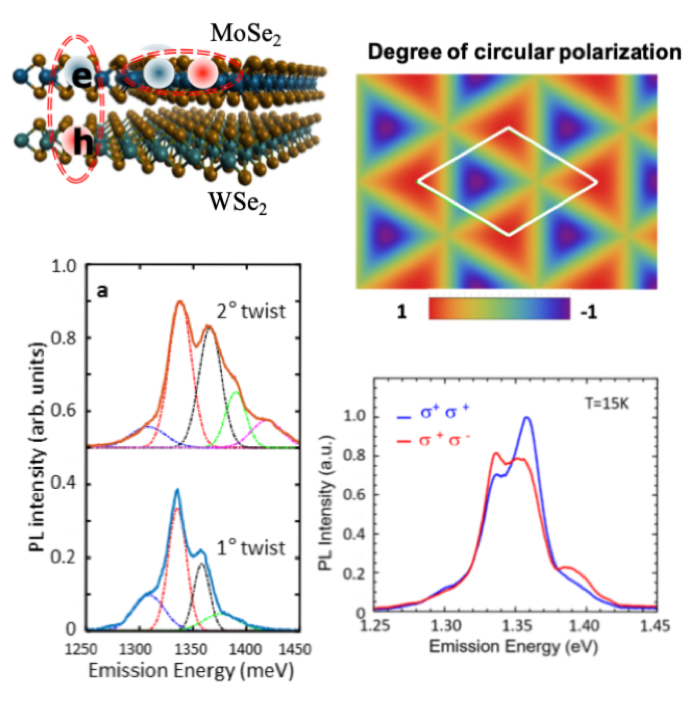 Both intra- and interlayer excitons form in a TMD heterostructure because of the type-II band alignment
Both intra- and interlayer excitons form in a TMD heterostructure because of the type-II band alignmentTechnical Description of Work: In transition metal dichalcogenides (TMDC) monolayers, there are two inequivalent valleys (energy extrema points in the band structure) related by time-reversal symmetry. Fundamental optical excitations, or excitons (bound electron-hole pairs) are formed at these valleys. The large spin orbit interaction in these materials leads to large energy splitting between the spin up and down states and valley contrasting optical selection rules. To utilize valley as a new information carrier, a simple method to separate this degree of freedom at room temperature is required.